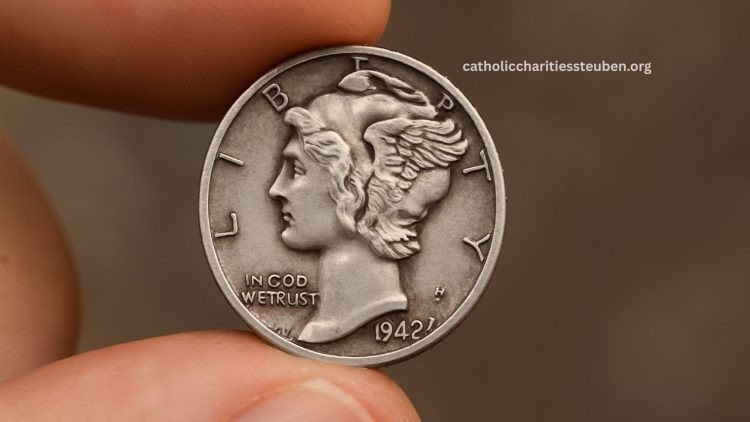The 1942/1 Mercury Dime stands as one of the most intriguing and valuable error coins in American numismatics.
This overdate error, where a 1942 die was mistakenly punched over a 1941 die, has captivated collectors for decades.
Recent auction records and discoveries have reignited interest in this rare coin, making it a hot topic in the coin collecting community.
Understanding the Overdate Error
The overdate occurred when the U.S. Mint, during the die preparation process, inadvertently used a 1941-dated hub to create a die intended for 1942 coinage.
This resulted in the underlying “1” from 1941 being visible beneath the “2” in 1942 on the coin’s date. Such errors are rare, especially in the 20th century, due to improved minting processes.
Mint Locations and Rarity
- Philadelphia Mint (1942/1): Estimated 3,600 surviving examples.
- Denver Mint (1942/1-D): Slightly rarer with approximately 3,200 known specimens.
Both versions are scarce, especially in uncirculated grades, and are highly sought after by collectors.
Market Value and Auction Highlights
The value of the 1942/1 Mercury Dime varies based on its condition and mint mark. Here’s a breakdown:
| Grade | Philadelphia (1942/1) | Denver (1942/1-D) |
|---|---|---|
| G-4 | $400 | $350 |
| XF-40 | $650 | $700 |
| MS-60 | $2,750 | $3,000 |
| MS-65 | $12,000 | $5,050 |
| MS-65 FB | $35,000 | $26,500 |
Note: “FB” denotes Full Bands, indicating a strong strike on the coin’s reverse.
Notable auction sales include:
- A 1942/1-D MS65 Full Bands sold for $26,500.
- A 1942/1 MS66 Full Bands fetched $120,000 at auction.
Authentication and Counterfeits
Due to their value, 1942/1 Mercury Dimes are often counterfeited. Collectors should:
- Seek coins certified by reputable grading services like PCGS or NGC.
- Be cautious of altered dates and ensure the overdate is clearly visible.
- Consult experts or reference images to verify authenticity.
The 1942/1 Mercury Dime remains a testament to the allure of minting anomalies in coin collecting. Its rich history, rarity, and the excitement it brings to auctions continue to captivate numismatists worldwide.
Whether you’re a seasoned collector or a newcomer, this coin represents a fascinating chapter in American coinage history.
FAQs
What makes the 1942/1 Mercury Dime so valuable?
The combination of a noticeable minting error, limited surviving specimens, and high demand among collectors contributes to its significant value.
How can I identify a genuine 1942/1 Mercury Dime?
Look for the clear overdate where the “1” from 1941 is visible beneath the “2” in 1942. It’s advisable to have the coin authenticated by a professional grading service.
Are there other notable Mercury Dime errors?
Yes, the 1942/1-D from the Denver Mint is another famous overdate. Additionally, the 1945-S Micro S is a recognized variety, though more common.

